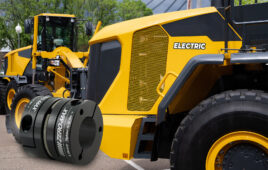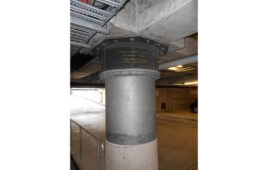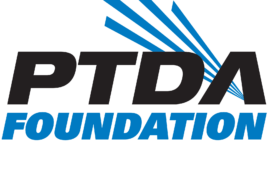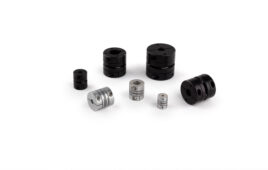Move beyond traditional coupling designs to improve performance and cut costs
Heavy-duty shaft couplings have traditionally had a couple of defining design characteristics. For one, these couplings usually rely on keyed shaft connections. For another, they tend to be over-engineered with regard to stiffness.
In many ways, this design approach makes perfect sense. Keyed connections have a long track record and well-understood engineering requirements, which makes them the default choice in many applications. And stiffness has obvious engineering virtues when it comes to transmitting power with maximum efficiency.
Yet keyed connections and excessively rigid coupling designs do have some under-recognized limitations — especially in large industrial, material handling, construction, and mining machines. These limitations include reduced torque transmission, alignment difficulties, wear, and costly assembly requirements.
In this white paper, we’ll look at a couple of heavy-duty applications that highlight the limitations of traditional coupling designs. One application involves a superior alternative to keyed couplings in mining conveyor system. The other deals with the pitfalls caused by a direct, rigid connection between gearbox and cable drum. Both applications have broader relevance to a wide range of large, heavily loaded coupling applications.
 MECHANICAL SHRINK FIT ELIMINATES KEYWAYS
MECHANICAL SHRINK FIT ELIMINATES KEYWAYS
In many heavy-duty applications, shaft couplings can weigh hundreds or thousands of pounds, causing alignment and installation challenges. These large couplings also have to contend with torque transmission requirements so high that keyed connections become impractical.
To take one recent example, we delivered a set of flange couplings that have a maximum rating of 240,000 ft-lb. These heavy-duty couplings, nine in all, join the motors and gearboxes that drive a big mining conveyor system. In this particular application, the couplings have to transmit reversing torques in excess of 180,000 ft-lb. No bending loads apply in this case, but these rigid couplings could have tolerated another 75,000 ft-lb of bending forces in addition to the torque loads.
While there are keyed couplings that could in theory meet these torque requirements, these designs would have been much larger to accommodate the large keys and keyways needed to withstand the torque loads (see sidebar “Torque Transmission Comparison”).
A better alternative, in this case, involved the use of flange couplings that employ a mechanical shrink fit around the shafts using our Shrink DiscTM technology. To couple a hub and shaft, shrink discs use a system of tapered thrust rings, an inner pressure ring, and a set of locking screws. When you tighten the locking screws around the circumference of the disc, the outer thrust rings are drawn together, compressing the inner ring against the hub and the hub against the shaft. The resulting shrink-fit can handle extremely high forces of these applications.

The shrink disc coupling beat out keyway-based couplings in this application for four reasons:
Eases installation. Each one of the couplings weighs more than 1,720 pounds. Trying to align and engage keyways with couplings this big is a job that the mine engineers wanted to avoid. And eases disassembly too. The mine’s engineering team likewise wanted a coupling solution that could be disassembled easily for maintenance. With the shrink discs, loosening the locking screws releases the pressure on the flange hub. The connection returns to its original clearance fit dimensions, freeing
the shaft for removal. Traditional machined shrink fits have no such release mechanism. To undo a traditional shrink fit, you have to heat the connection for hours to expand the coupling ID. Sometimes this procedure doesn’t go as planned, damaging the parts.
Resists contamination. Once the locking screws are engaged and all the contact surfaces are under pressure, the shrink discs shut out dust and debris. This capability was important in a contamination-prone mining application.
Prevents misalignment. Thanks to the even distribution of compression forces around the circumference of the shaft, shrink disc couplings inherently prevent misalignment. In addition to use on mining and other large conveyers, flanged shaft couplings with shrink disc technology are also used in other heavy-duty applications— including gearboxes, process equipment, material handling systems, and aggregate production.
SELECTIVELY COMPLIANT COUPLING PROTECTS GEARBOXES
The big gearboxes that drive cable drums do not come cheap. Yet engineers often make a design mistake that can shorten the gearbox’s working life. This mistake involves the use of a rigid, direct coupling between the gearbox output shaft and the cable drum. While common, this arrangement can subject the output shaft to alternating bending moments and other forces as the drum rotates, causing wear in the short term and reduced lifecycle in the long term.
The problem with direct couplings boils down to statics: The rigid connection between the shaft and drum creates a statically indeterminate structure — one with too many forces and not enough equilibrium equations (See Figure 2). These structures can be subject to unpredictable deformations and difficult to engineer properly. The usual strategy is to over-engineer and precisely align all the structural components. It is a very expensive strategy.

A better approach to cable drum mounting is to use a selectively compliant coupling between the output shaft and the drum. The resulting structure will be statically determinate, making it far easier to predict and manage the forces on the gearbox output shaft.
Barrel couplings, such as the TSCHAN TK models, are specifically designed for these cable drum mounting applications—in cranes, hoists, winches, and conveyors. These couplings are selectively compliant in the sense that they can tolerate angular and axial misalignment without sacrificing the necessary torsional rigidity.
The TK barrel couplings consist of a hub, a sleeve, and a collection of barrel-shaped inserts. Made from hardened steel, the barrel inserts transmit the torque as they roll within mating semicircular pockets machined on the hub OD and the sleeve ID. The barrel-shaped geometry of the inserts compensates for angular and axial misalignment between the hub and sleeve—and ultimately, between the gearbox shaft and drum. Put differently, the coupling creates an articulating joint in the angular and axial directions while maintaining torsional rigidity. This articulating joint soaks up the misalignments that occur as loads on the rotating drum change.
The barrel coupling hub attaches to the gearbox shaft, while the sleeve attaches to the drum. The bulk of the coupling actually protrudes into the drum, giving the coupling a smaller overall profile than a comparable gear coupling. The entire coupling assembly is sealed to prevent any dust ingress. Because the coupling permits axial travel, the support bearing on the far end of the drum should be a self-adjusting bearing to withstand axial loading.
TSCHAN TK barrel couplings are available with an outside diameter of up to 850 mm and can accommodate shafts up to 400 mm. Maximum torque is 650,000 Nm.
Ringfeder
www.ringfeder.com
Filed Under: Coupling Tips




